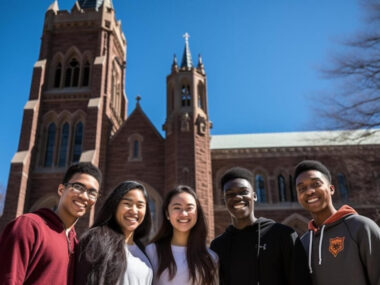Australia, renowned for its world-class universities and vibrant research environment, is a top destination for international students pursuing Higher Degree by Research (HDR) programs, such as master’s by research or PhDs. Fully funded HDR scholarships provide a transformative opportunity for talented students to advance their academic and professional careers while living in a country celebrated for its multicultural society and high quality of life. These scholarships, primarily funded by the Australian government and universities, cover tuition fees, living expenses, and additional costs, making advanced research accessible to both domestic and international candidates. As a scholarship-focused blogger at kigems.com, I’m excited to guide you through the details of fully funded HDR scholarships in Australia for 2025/2026, including their significance, eligibility, benefits, application process, and practical tips for success. Drawing from reliable sources, including the Australian Department of Education and university websites, this comprehensive guide ensures you have the tools to pursue these opportunities. As of 5:56 AM WAT on August 20, 2025, application cycles for 2025/2026 are open start preparing now to meet deadlines and secure your future in Australia. I have already provided the Application link below the conclusion of this article, so take your time to understand these Opportunity by going through the content of these Article!
Why Pursue an HDR Scholarship in Australia?
Australia’s research ecosystem is globally recognized, with universities like the University of Melbourne, Australian National University (ANU), and University of Queensland ranking among the world’s best. Fully funded HDR scholarships make it possible for talented students to contribute to cutting-edge research in fields like science, engineering, health, and social sciences without financial strain. Key reasons to pursue these scholarships include:
- Academic Excellence: Australian universities offer rigorous HDR programs, typically 2 years for a master’s by research and 3–4 years for a PhD, fostering innovation and global impact.
- Financial Support: Fully funded scholarships cover tuition, provide living stipends, and often include allowances for travel, research, or relocation, easing financial burdens.
- Global Opportunities: Graduates gain skills for careers in academia, industry, or government, with Australia’s strong economy offering pathways to employment or further research.
- Cultural and Lifestyle Benefits: Australia’s multicultural cities, such as Sydney, Melbourne, and Brisbane, provide a welcoming environment, excellent healthcare, and diverse communities.
- Research Collaboration: Many scholarships encourage industry partnerships, enhancing employability through internships or co-funded projects.
For international students, these scholarships also facilitate visa sponsorship (Subclass 500) and access to Australia’s high standard of living, making them a gateway to both academic and personal growth.
Overview of Fully Funded HDR Scholarships
The cornerstone of fully funded HDR scholarships in Australia is the Research Training Program (RTP), administered by the Australian government through universities. Additionally, universities offer their own scholarships, such as the University of Adelaide Research Scholarship (UARS) or Deakin University Postgraduate Research Scholarship (DUPRS). These scholarships support master’s by research and PhD candidates, covering:
- Tuition Fees Offset: Full coverage of tuition fees for up to 2 years (master’s) or 4 years (PhD).
- Living Stipend: Annual payments, typically $33,000–$50,000 (tax-free, 2025 rates), paid fortnightly to cover living expenses.
- Allowances: Relocation grants ($500–$1,500), travel funds, or Overseas Student Health Cover (OSHC) for international students.
Other scholarship types include university-specific awards, externally funded grants, and industry-linked programs, some requiring a 60-day internship. These scholarships are awarded competitively based on academic merit, research potential, and alignment with institutional priorities.
Eligibility for HDR Scholarships
Eligibility criteria vary slightly by university and scholarship but generally include:
- Academic Qualifications:
- A bachelor’s degree with first-class honors (or equivalent, e.g., 80%+ in prior studies) for PhD applicants.
- A relevant undergraduate or master’s degree for master’s by research applicants.
- Equivalent qualifications from overseas institutions, assessed against the Australian Qualifications Framework (AQF).
- Research Experience: Demonstrated through publications, professional experience, or prior research projects. Current HDR students may apply if within 3 years (PhD) or 2 years (master’s) of their program.
- English Proficiency: International applicants from non-English-speaking countries need IELTS (6.5+), TOEFL, or equivalent, unless exempted (e.g., prior study in English).
- Enrollment Status: Must be enrolled (or eligible to enroll) as a full-time HDR student at an Australian university. Part-time study is allowed in specific cases (e.g., disability, caring responsibilities).
- Nationality: Open to both domestic and international students, though some scholarships prioritize Indigenous Australians or specific countries.
- Additional Requirements: Some scholarships, like those at UniSQ, require alignment with university research priorities or an industry partner’s Letter of Support for internship streams.
Applicants must not receive equivalent funding from other Commonwealth sources exceeding 75% of the RTP stipend rate.
Key Fully Funded HDR Scholarships for 2025/2026
Several prestigious scholarships are available for HDR candidates aiming to start in 2025 or 2026:
- Research Training Program (RTP) Scholarship:
- Overview: Funded by the Australian government, RTP supports domestic and international students at eligible universities (e.g., UNSW, University of Sydney).
- Benefits: Tuition fee offset (up to 2 years for master’s, 4 years for PhD), stipend of $35,480–$38,500/year (2025 rates), and relocation allowances ($500–$1,500).
- Application: Apply through university portals (e.g., UNSW by May 2025 for September 2025 intake). Automatic consideration with HDR admission at some institutions (e.g., ANU). Deadlines vary (e.g., August 31, 2025, for ANU international applicants).
- Note: Highly competitive; prioritize strong academic records and research proposals.
- University of Melbourne Graduate Research Scholarship:
- Overview: Supports high-achieving students in master’s by research or PhD programs.
- Benefits: Full fee offset (2 years for master’s, 4 years for PhD), $38,500/year stipend (2025 rate), relocation grant ($2,000–$3,000), and OSHC for international students.
- Application: Automatic consideration with HDR application; deadlines October 31, 2025, for 2026 entry.
- Note: Ideal for research in diverse fields like health, engineering, or humanities.
- Deakin University HDR Scholarship (RTP and DUPRS):
- Overview: Combines government-funded RTP and Deakin-funded DUPRS for domestic and international students.
- Benefits: $35,550/year stipend (2025 rate), tuition offset, and relocation allowance ($500–$1,500).
- Application: Apply by university deadlines (e.g., April 2025 for September 2025). Requires 80%+ in prior research components.
- Note: Must enroll as full-time, on-campus students.
- University of Queensland Graduate School Scholarship (UQGSS):
- Overview: Supports HDR students in fields like engineering, health, or social sciences.
- Benefits: $36,000/year stipend (2025 rate), tuition offset, and OSHC.
- Application: Open March 31–May 18, 2025, for 2026 entry. Apply via UQ’s portal.
- Note: Competitive, with shortlisting based on merit.
- Indigenous-Specific Scholarships: Programs like ANU’s University Research Scholarship or University of Adelaide’s awards offer $50,000/year stipends for Aboriginal or Torres Strait Islander students, plus $5,000 travel allowances.
These scholarships align with 2025/2026 intakes (typically February, July, or October), with applications opening 6–12 months prior.
Benefits of HDR Scholarships
Fully funded HDR scholarships offer:
- Financial Freedom: Full tuition coverage and stipends ($33,000–$50,000/year) cover living costs, reducing financial stress.
- Research Support: Access to world-class facilities, supervisors, and industry networks, enhancing research quality.
- Visa Sponsorship: International students receive Subclass 500 visa support, valid for the program duration (up to 4 years).
- Career Pathways: Industry internships (e.g., 60-day placements at UniSQ) and global recognition boost employability.
- Lifestyle Benefits: Live in safe, vibrant cities with access to healthcare (via OSHC) and multicultural communities.
Application Process for HDR Scholarships
- Research Universities and Programs:
- Identify universities with strong research programs (e.g., UNSW, ANU, Melbourne) via their websites or Study in Australia.
- Align your research proposal with university priorities or flagship areas (e.g., UniSQ’s focus on health or sustainability).
- Prepare Documents:
- Academic transcripts, degree certificates, and English proficiency results.
- Research proposal (1–2 pages) outlining objectives, methodology, and impact.
- Curriculum vitae (CV) highlighting publications, experience, or awards.
- Two–three recommendation letters from academic or professional referees.
- Proof of Indigenous status (if applicable) for specific scholarships.
- Apply for HDR Admission:
- Submit applications via university portals (e.g., UCAS Postgraduate or direct systems) by deadlines (e.g., May 18, 2025, for UQ’s 2026 intake).
- Receive a Confirmation of Enrolment (CoE) upon acceptance, required for visa applications.
- Apply for Scholarships:
- Some scholarships (e.g., ANU, Melbourne) automatically consider admitted applicants; others (e.g., RTP at Sydney) require separate forms.
- Deadlines: August–October 2025 for 2026 intakes (e.g., ANU: August 31 for international, October 31 for domestic).
- Secure a Student Visa (Subclass 500):
- Apply online via Home Affairs within 6 months of program start.
- Provide CoE, proof of funds (e.g., scholarship award letter), OSHC, and passport.
- Pay $710 visa fee (2025 rate) and $1,035/year for OSHC.
- Plan Relocation:
- Arrange accommodation (university halls or rentals via Domain.com.au).
- Budget for initial costs ($2,000–$5,000 for flights, deposits), per move.org.
Costs and Financial Planning
- Tuition Fees: $20,000–$45,000/year, fully covered by scholarships.
- Living Costs: $2,000–$3,000/month for a single student in cities like Sydney or Melbourne; scholarships’ stipends cover most expenses.
- OSHC: $600–$800/year for international students, often included in scholarships.
- Relocation: $500–$1,500 allowances help offset moving costs (e.g., flights, shipping).
Part-time work (up to 48 hours/fortnight on a Subclass 500 visa) can supplement income, but stipends are designed to cover primary living costs.
Practical Tips for Applicants
- Start Early: Begin researching by August 2025 to meet deadlines (e.g., May–October 2025 for 2026 intakes).
- Craft a Strong Proposal: Align with university research strengths; seek supervisor endorsement for competitive edge.
- Secure References: Contact referees early, providing them with your proposal and CV.
- Verify Deadlines: Check university portals (e.g., unsw.edu.au, anu.edu.au) for exact dates.
- Prepare for Visa: Apply 3–6 months before program start; ensure OSHC is active.
- Network with Supervisors: Contact potential supervisors to strengthen your application.
- Use Resources: Leverage kigems.com for tips and community support.
Avoid pitfalls like incomplete applications or missing deadlines, which can lead to rejection. Use official university channels to avoid scams.
Challenges and Considerations
- Competitive Process: Scholarships are merit-based; strong grades (80%+) and publications are critical.
- Visa Delays: Processing can take 4–12 weeks; apply early and provide complete documents.
- Living Costs: Stipends may not fully cover expenses in high-cost cities; budget carefully.
- Ethical Applications: Provide accurate academic and financial details to avoid disqualification.
Secure travel insurance for unexpected disruptions, as universities are not liable for visa or travel issues.
Success Stories: Transforming Lives Through HDR Scholarships
Aisha, a Nigerian PhD candidate, secured an RTP Scholarship at ANU in 2024, receiving a $38,154 stipend and tuition offset. Her research on renewable energy led to a post-doctoral position in Australia, shared on kigems.com.
Similarly, Carlos, from Brazil, won a UQ scholarship in 2023, covering his PhD in biomedical engineering. The relocation allowance eased his move, and an industry internship secured a job offer. These stories highlight the life-changing impact of HDR scholarships.
Future Outlook for HDR Scholarships
Australia’s commitment to research funding ensures RTP and university scholarships will remain robust in 2025/2026. Emerging priorities, like sustainability and health, may increase opportunities for aligned projects. Industry internship weightings, introduced in 2021, will continue to enhance employability. Monitor university websites for updates.
Practical Advice for Applicants
- Act Now: Start applications by September 2025 to meet early 2026 deadlines.
- Tailor Applications: Highlight research alignment with university goals.
- Document Thoroughly: Ensure transcripts, proposals, and references are complete.
- Engage Supervisors: Build relationships to strengthen your candidacy.
- Plan Finances: Use stipends wisely and explore part-time work options.
- Stay Updated: Check kigems.com and university portals for changes.
Conclusion: Seize Your Research Future in Australia
Fully funded HDR scholarships in Australia for 2025/2026 offer international and domestic students a chance to pursue world-class research without financial barriers. By securing scholarships like RTP or university-specific awards, you can access top-tier education, global networks, and a vibrant lifestyle. Start preparing today to meet application and visa deadlines for 2025 or 2026 intakes, and take the first step toward a transformative academic journey.
For more details and to apply, visit the Australian Department of Education’s RTP page: https://www.education.gov.au/research-training-program.






